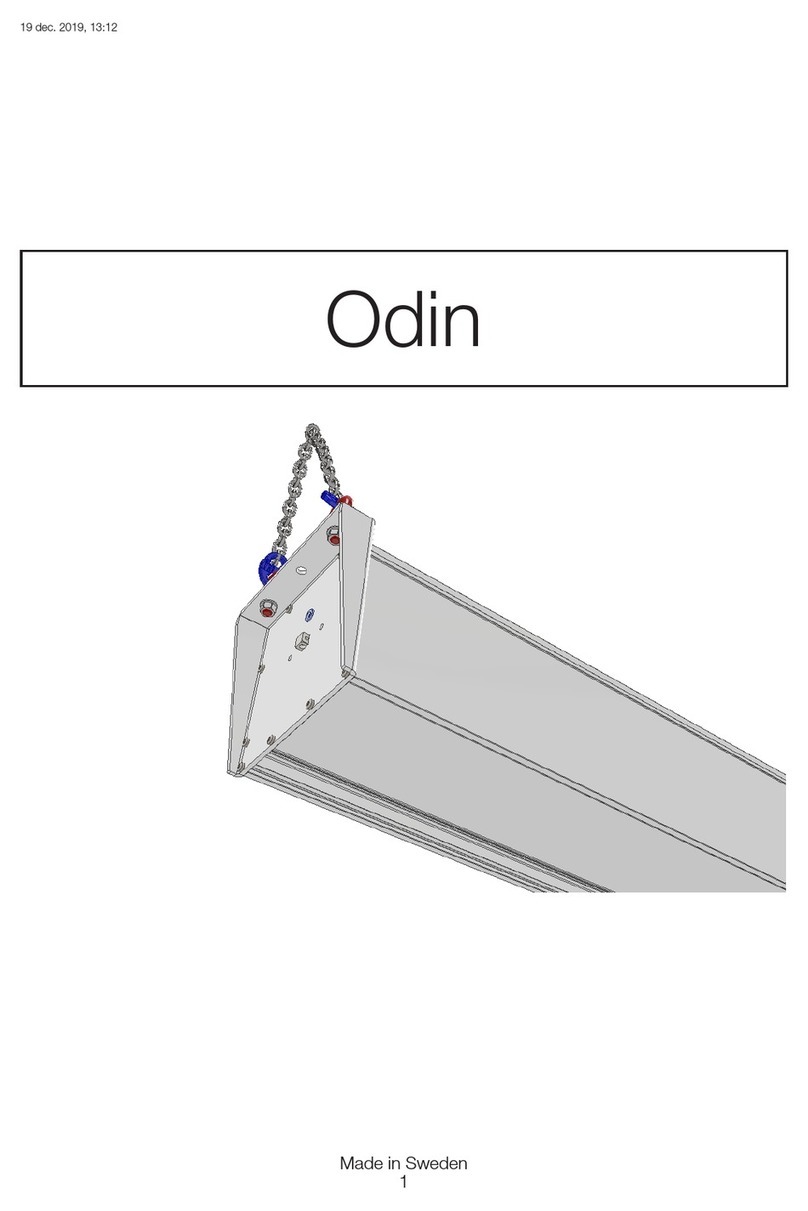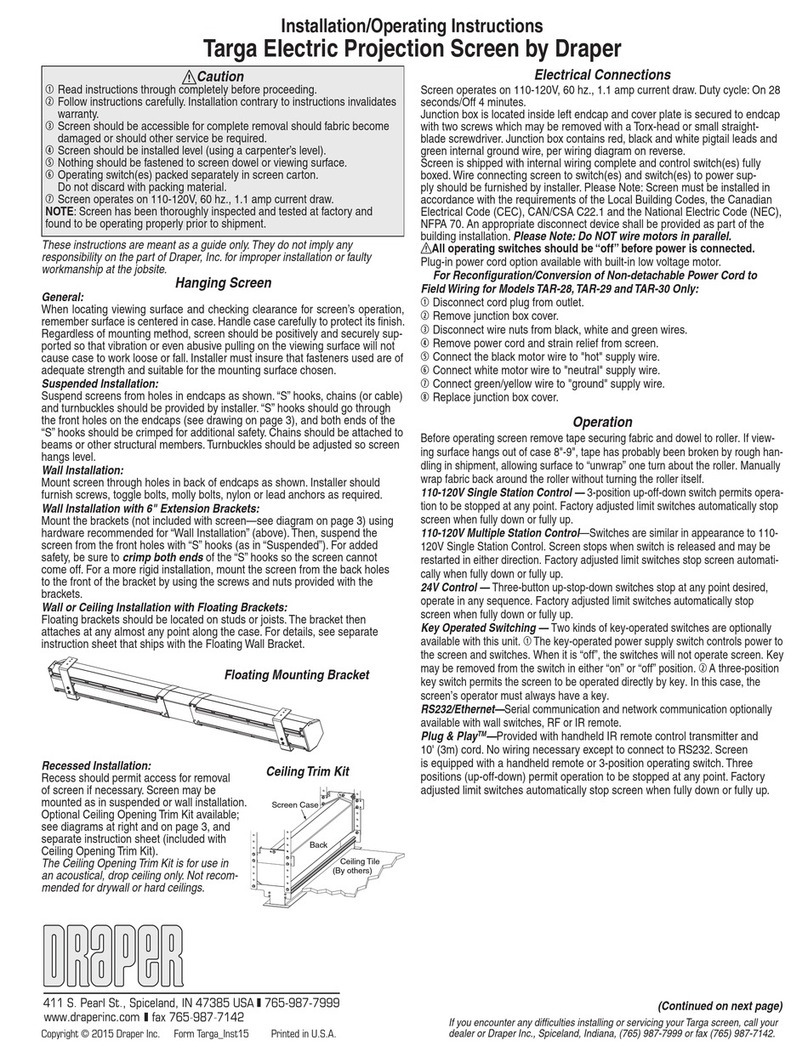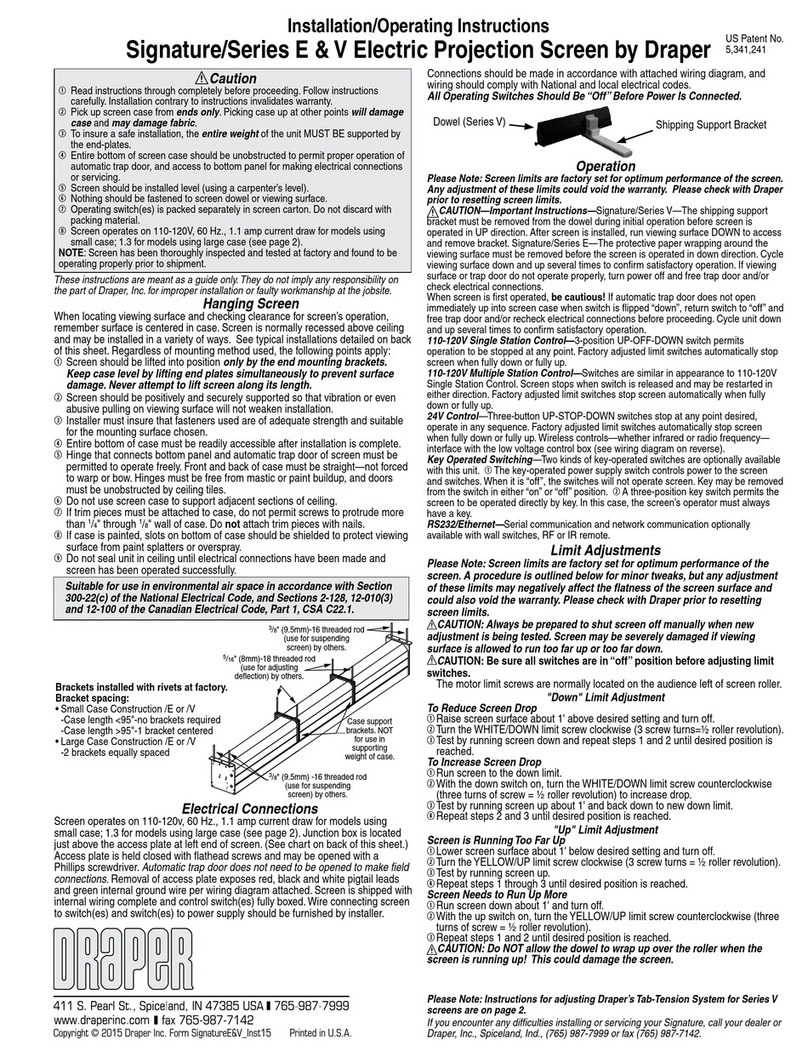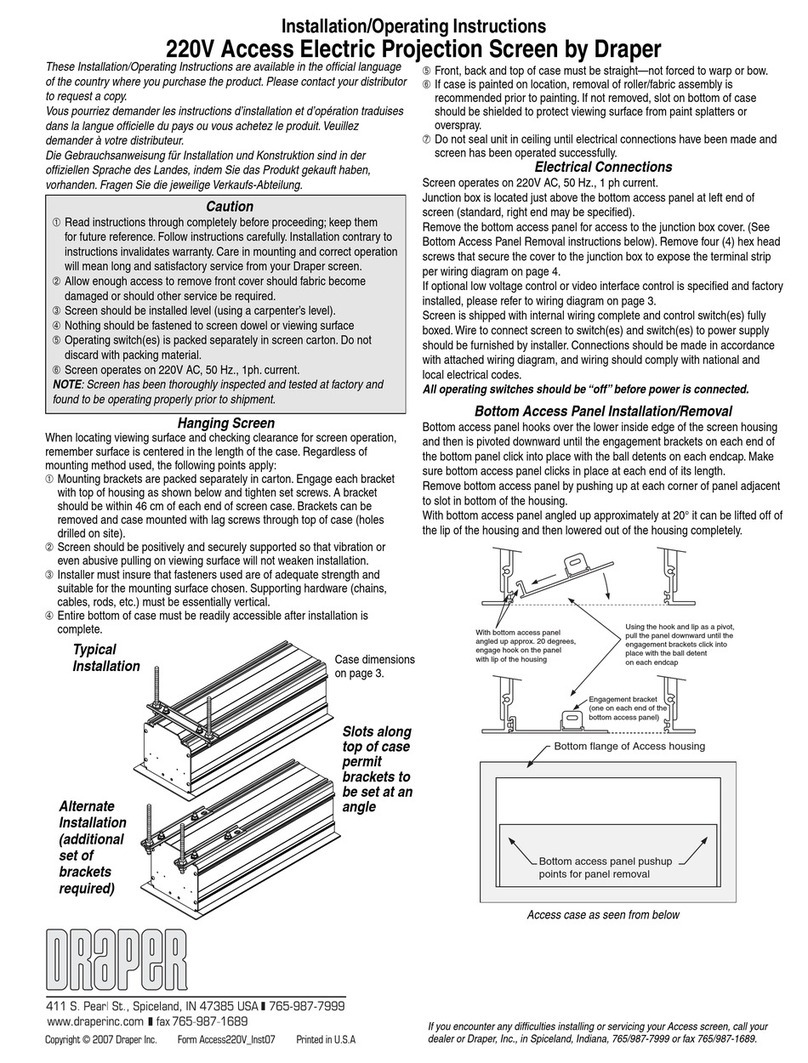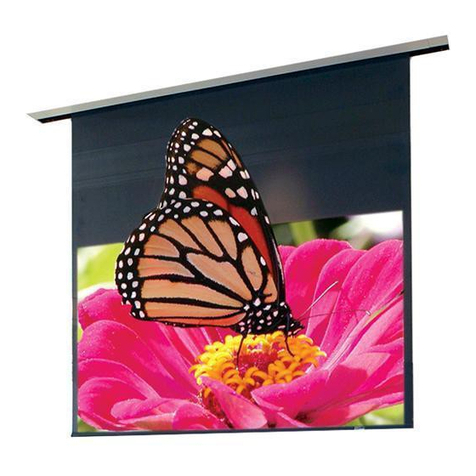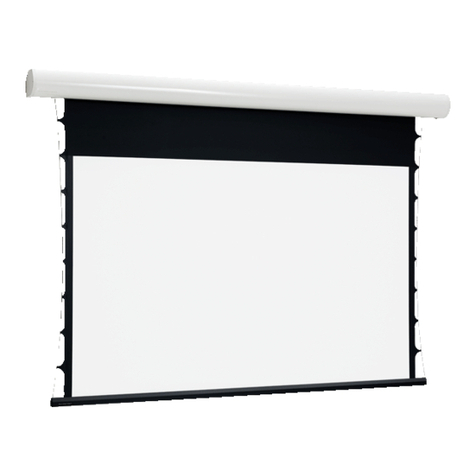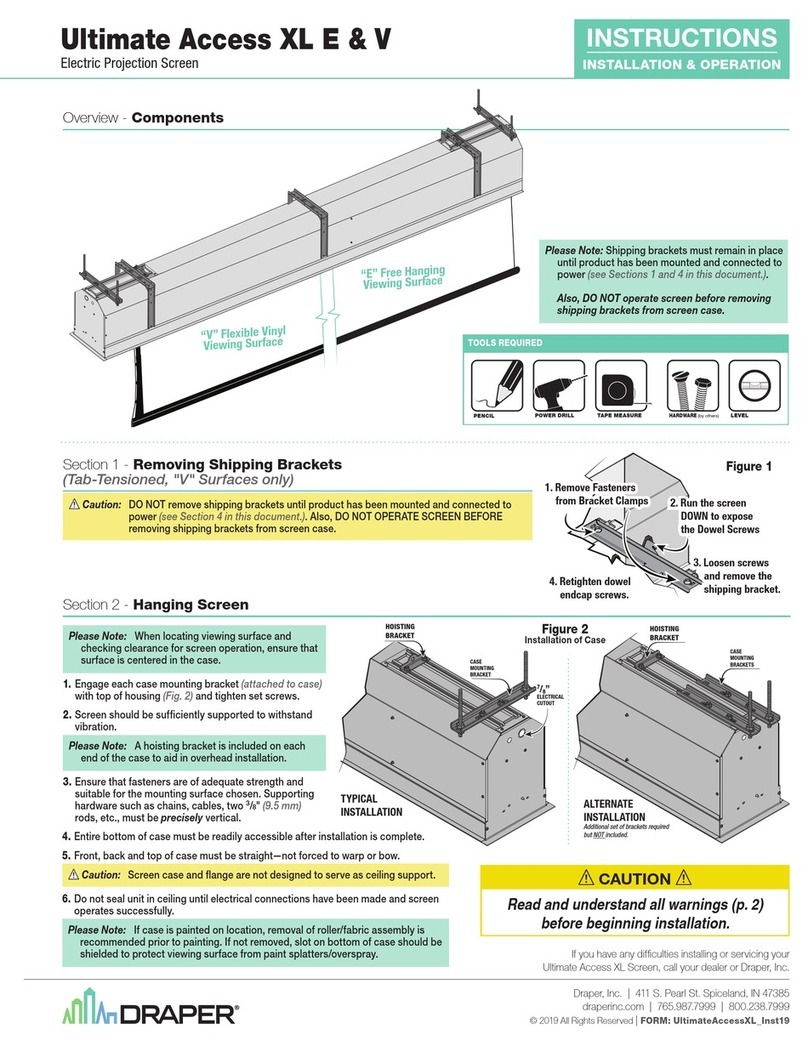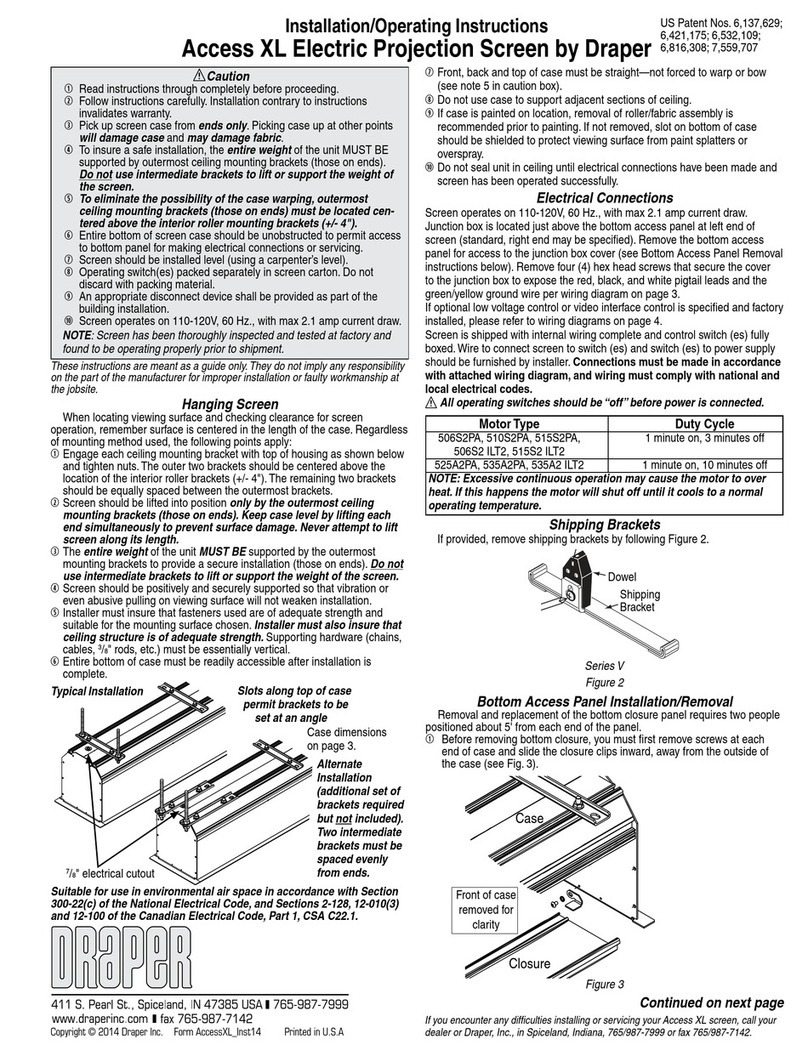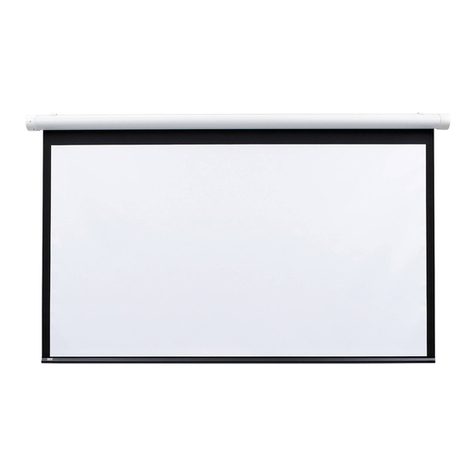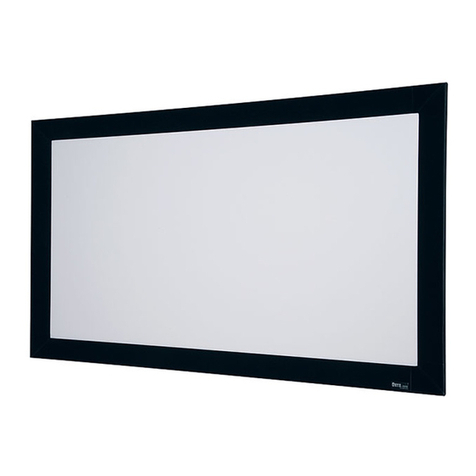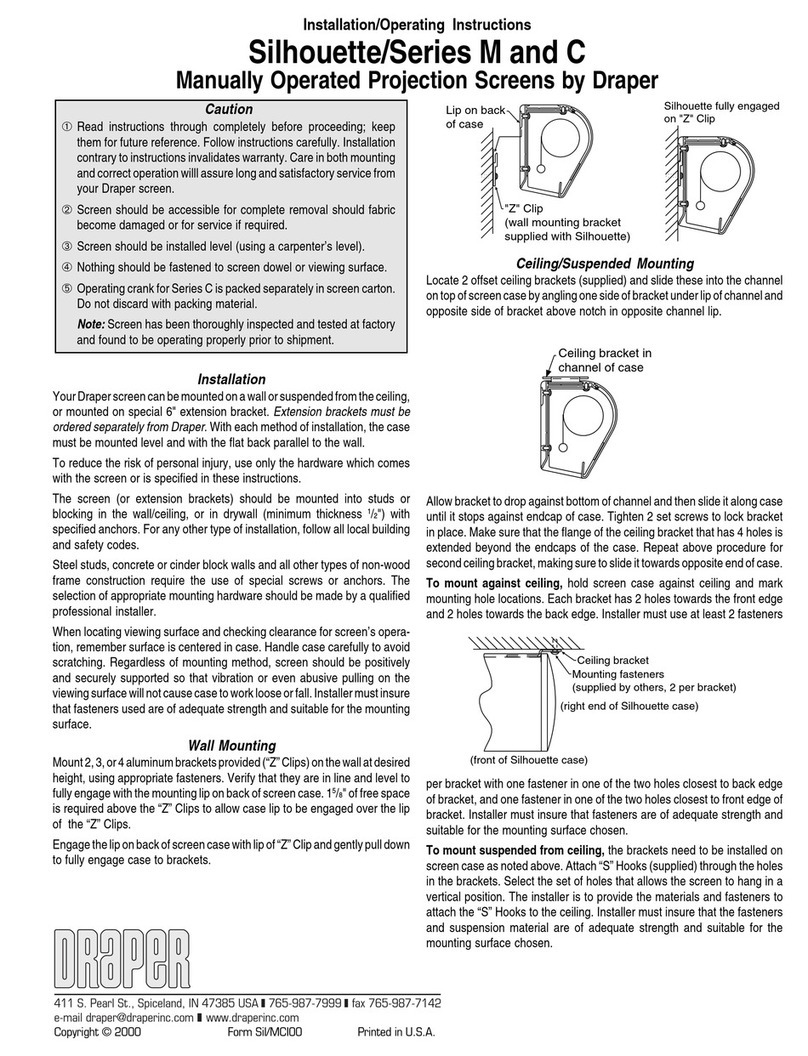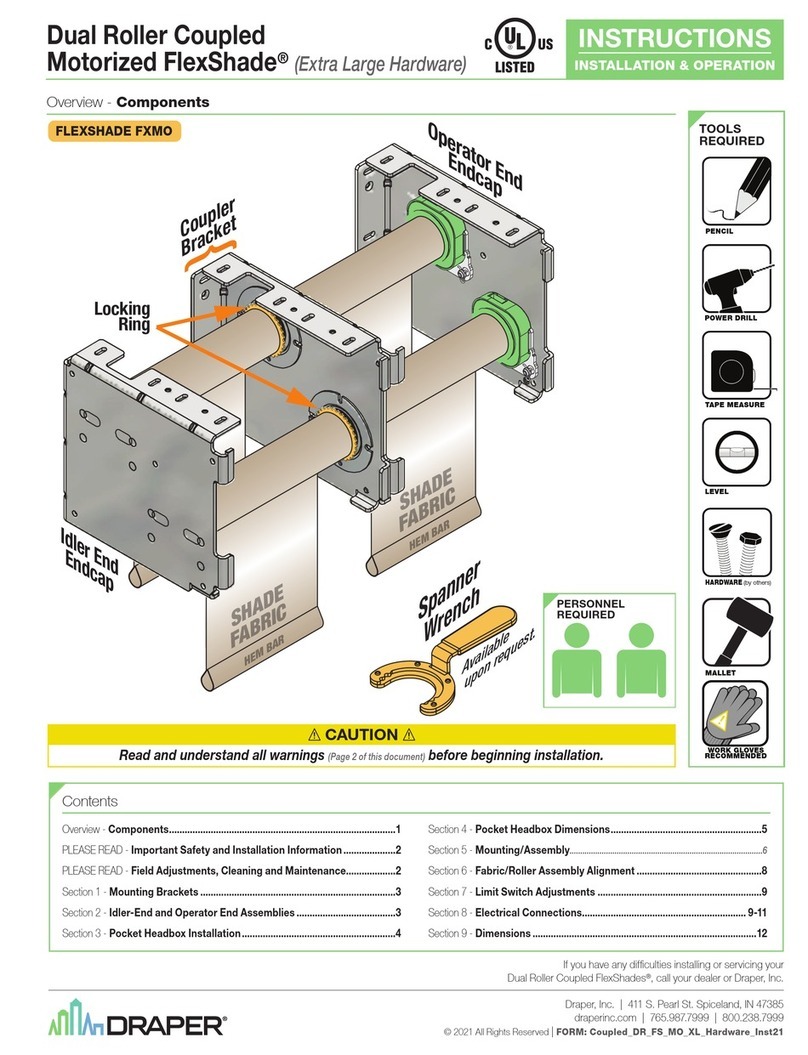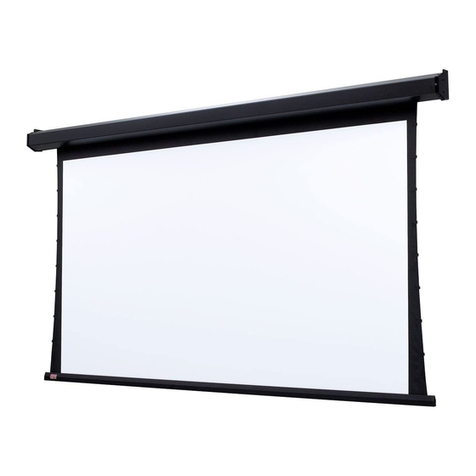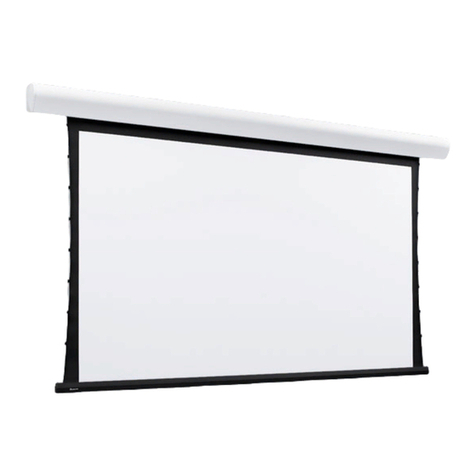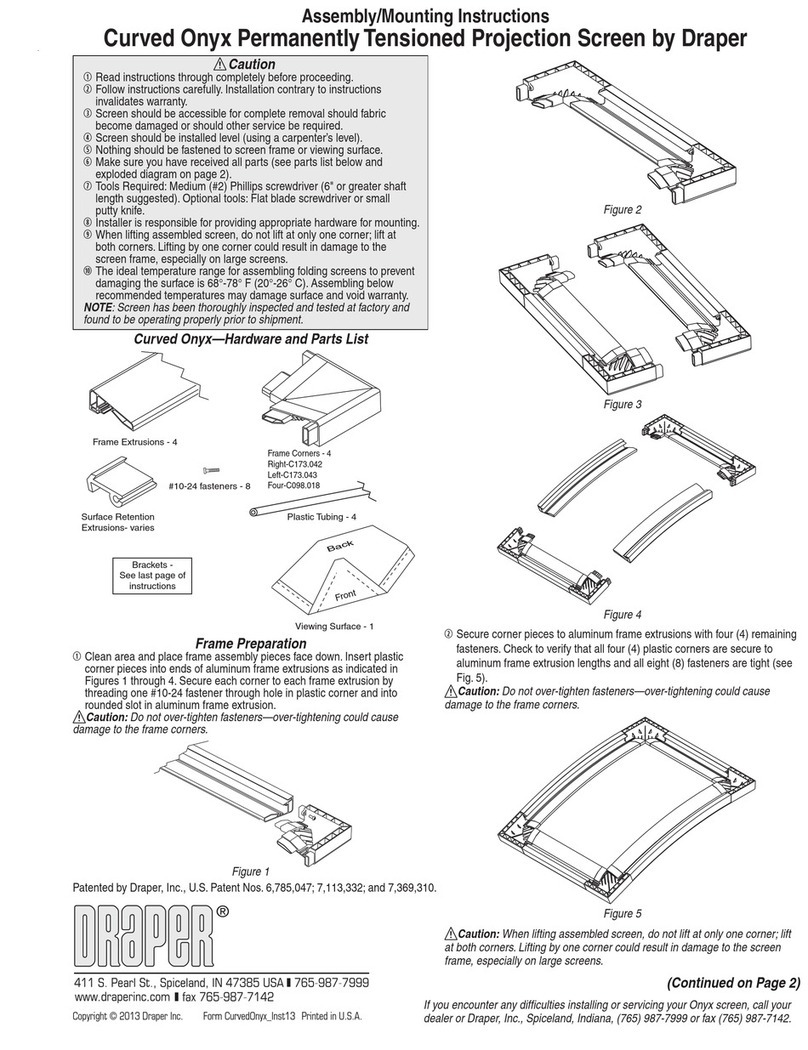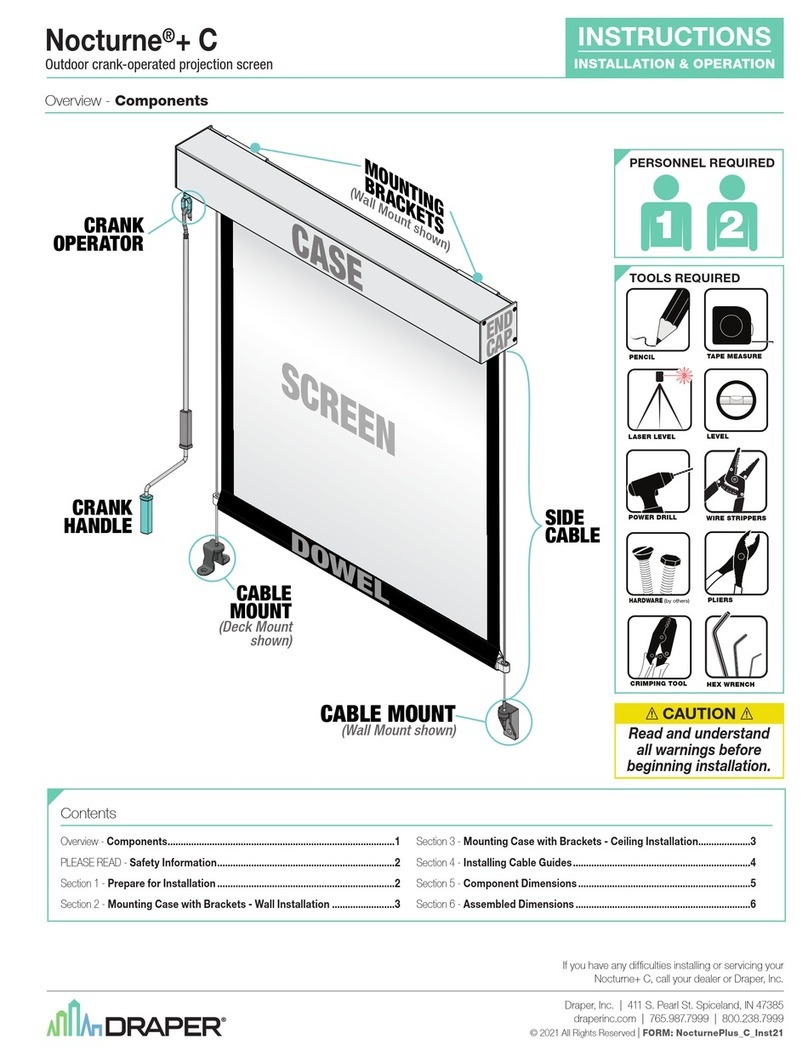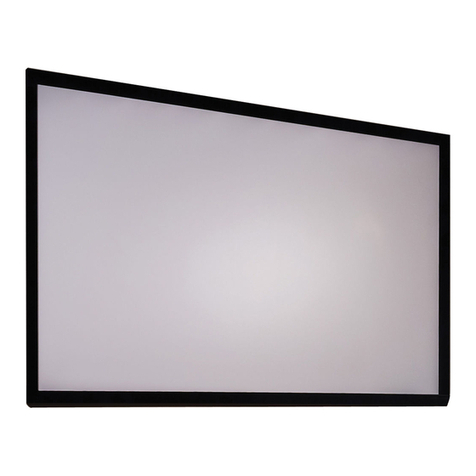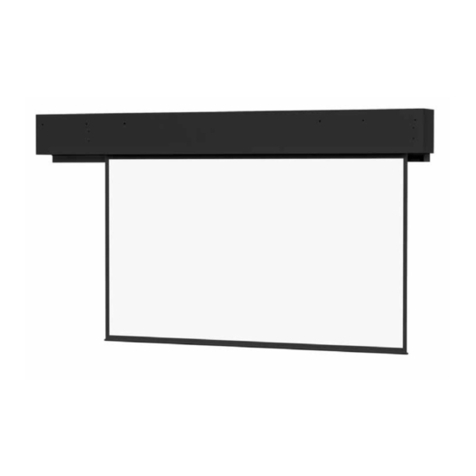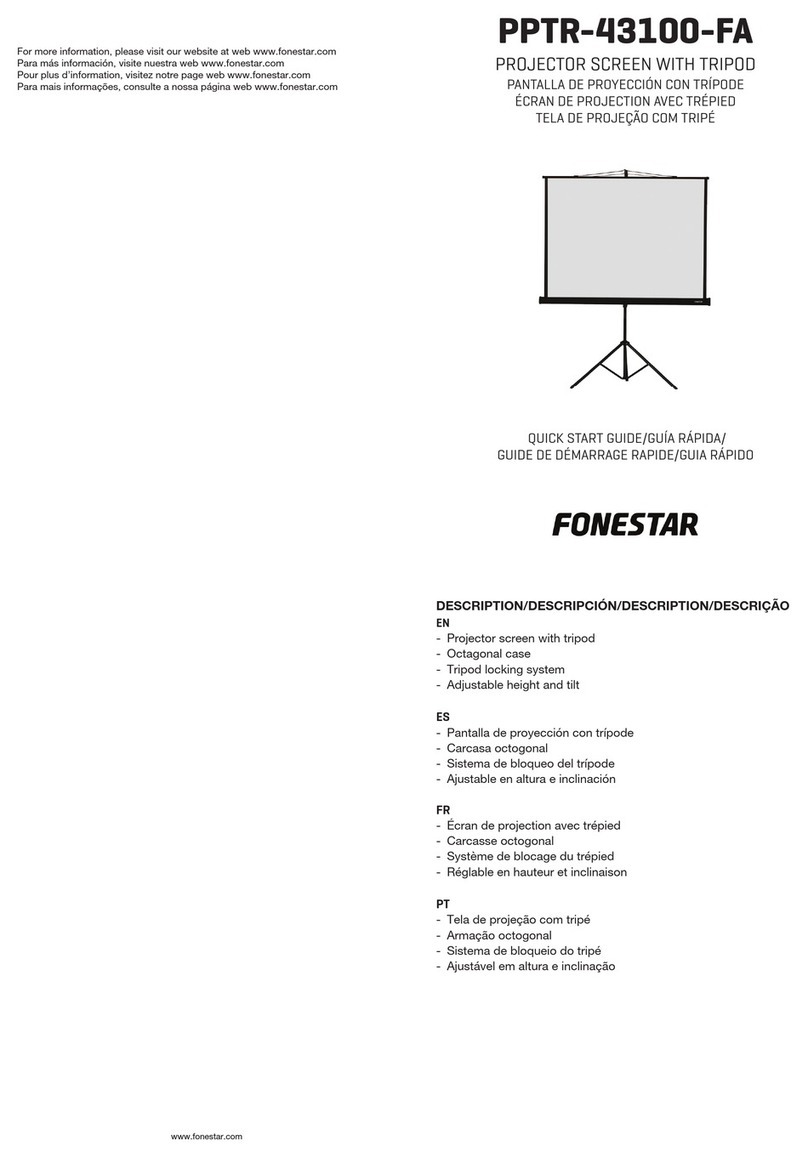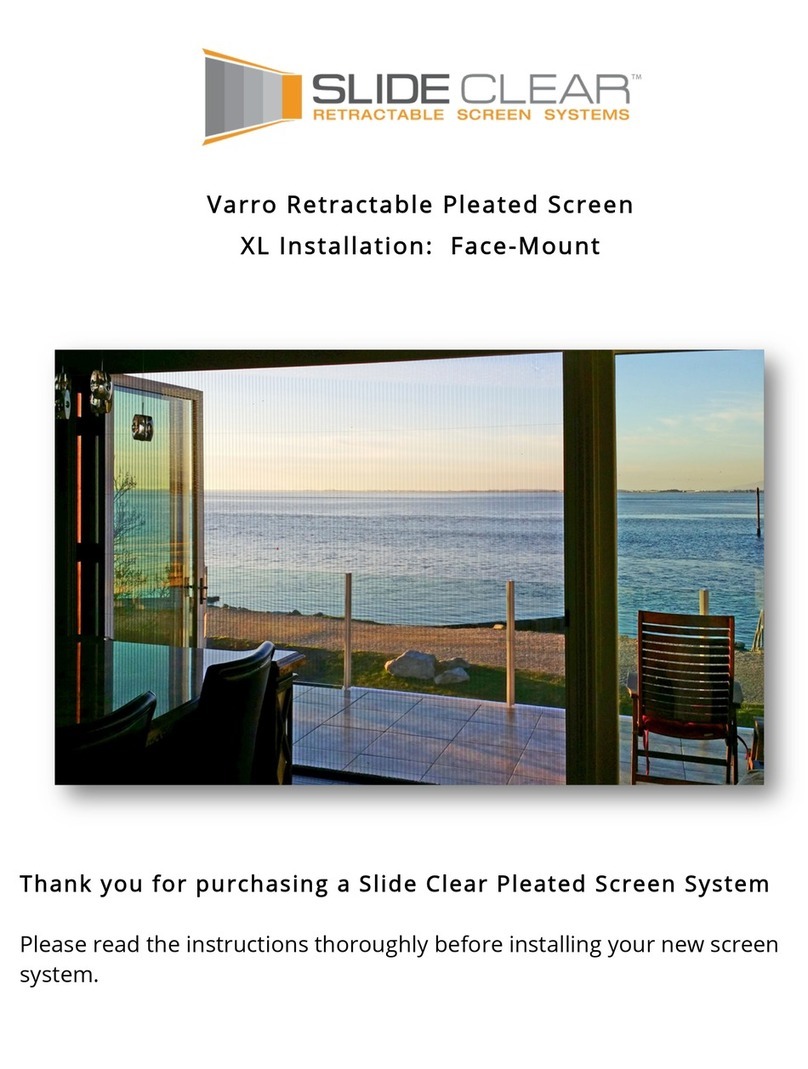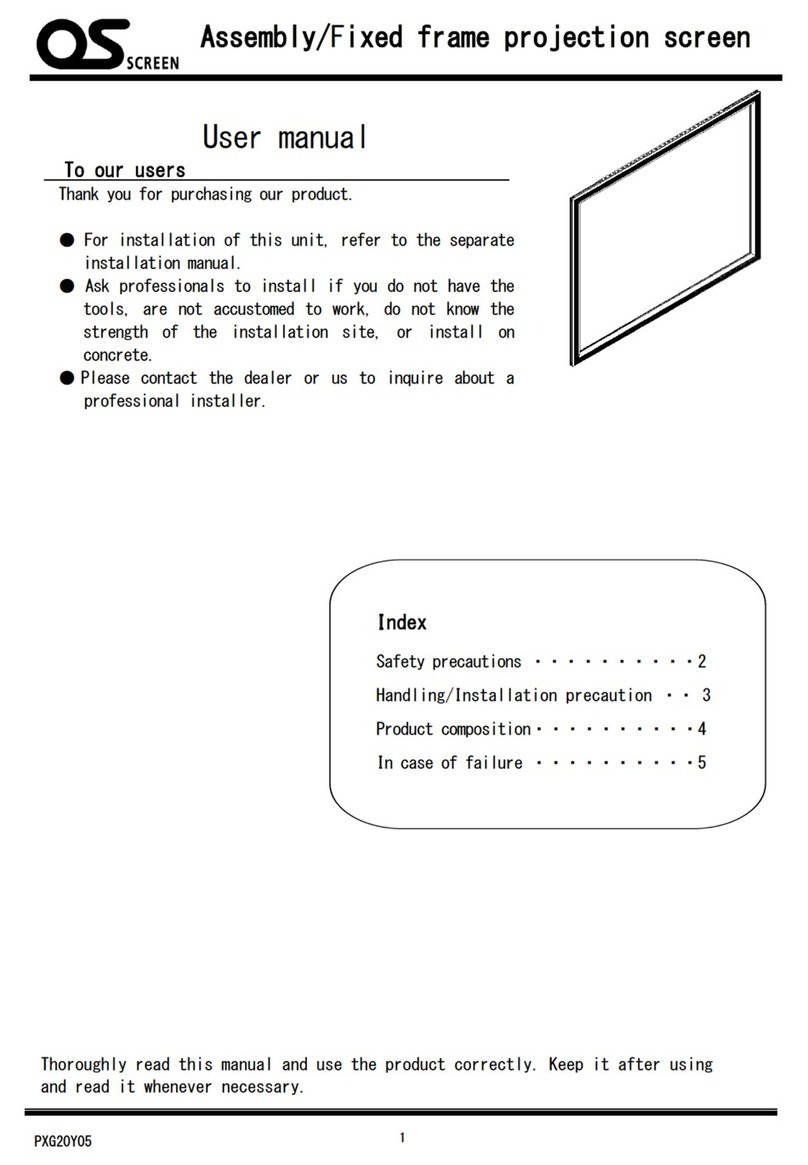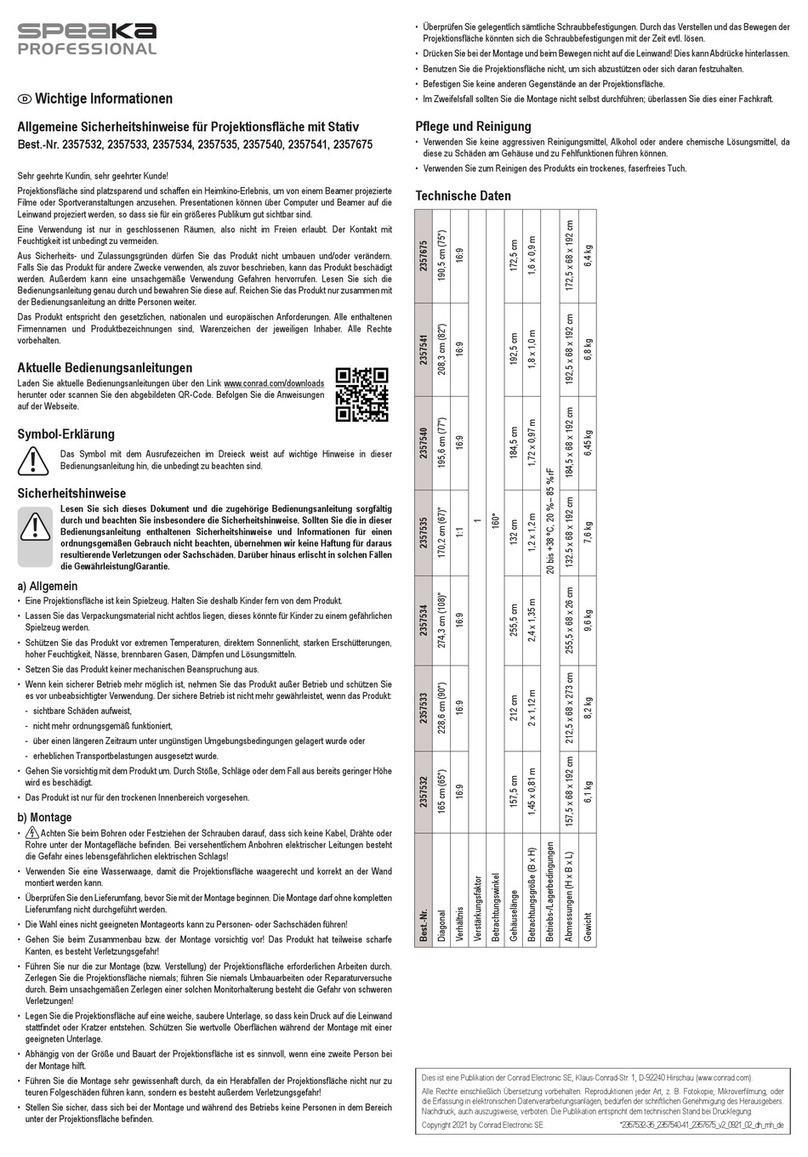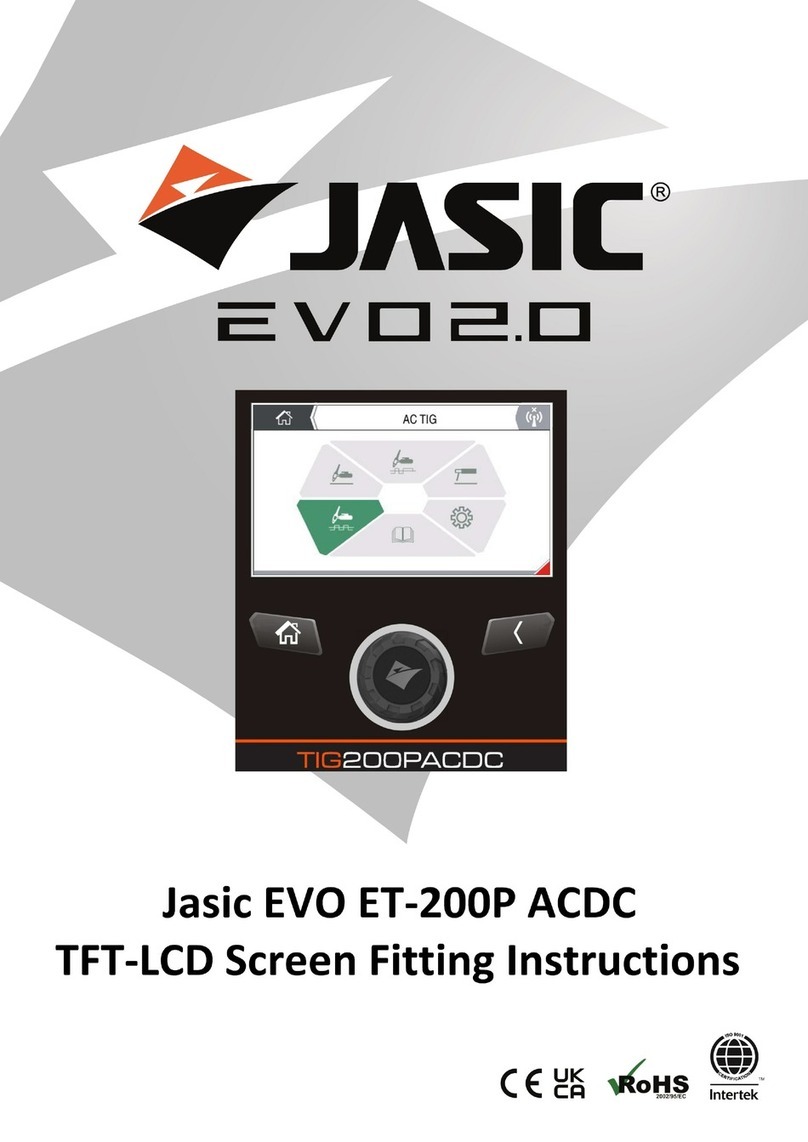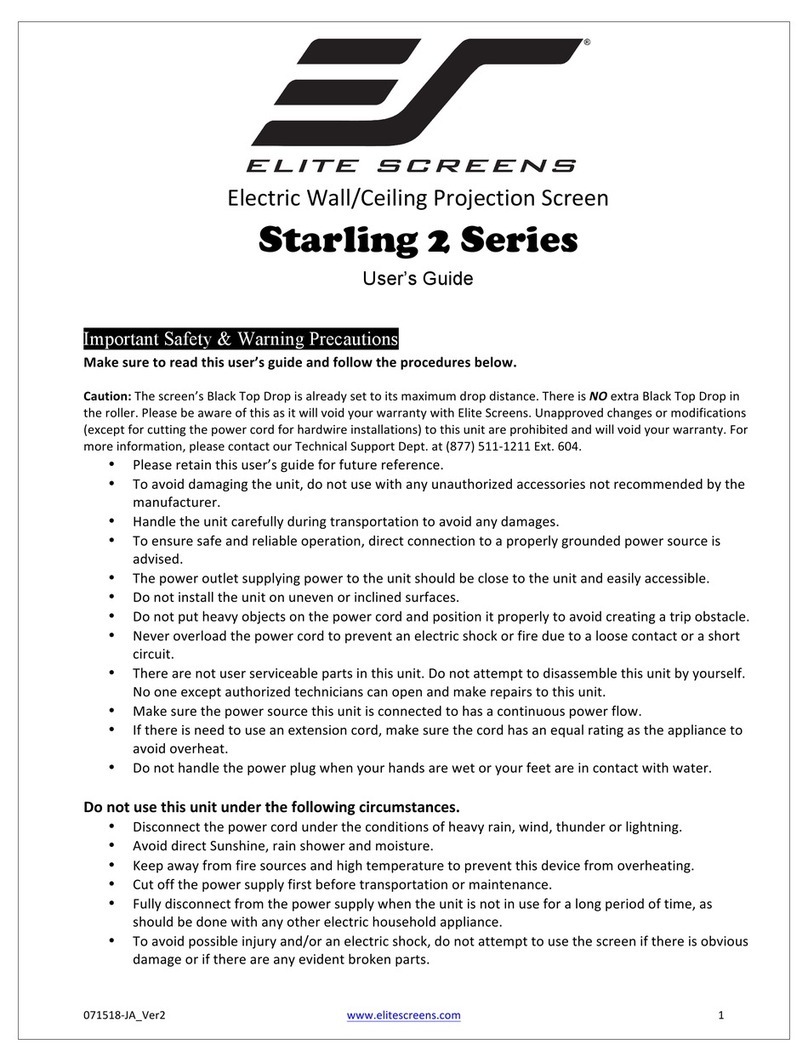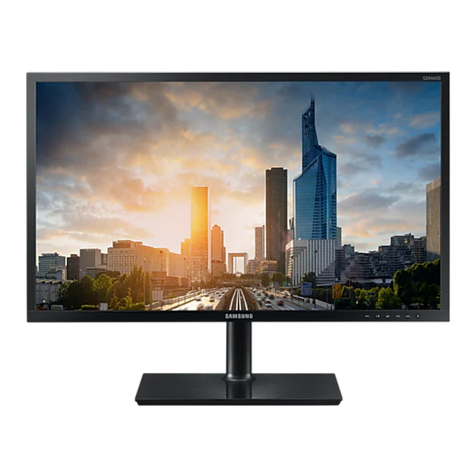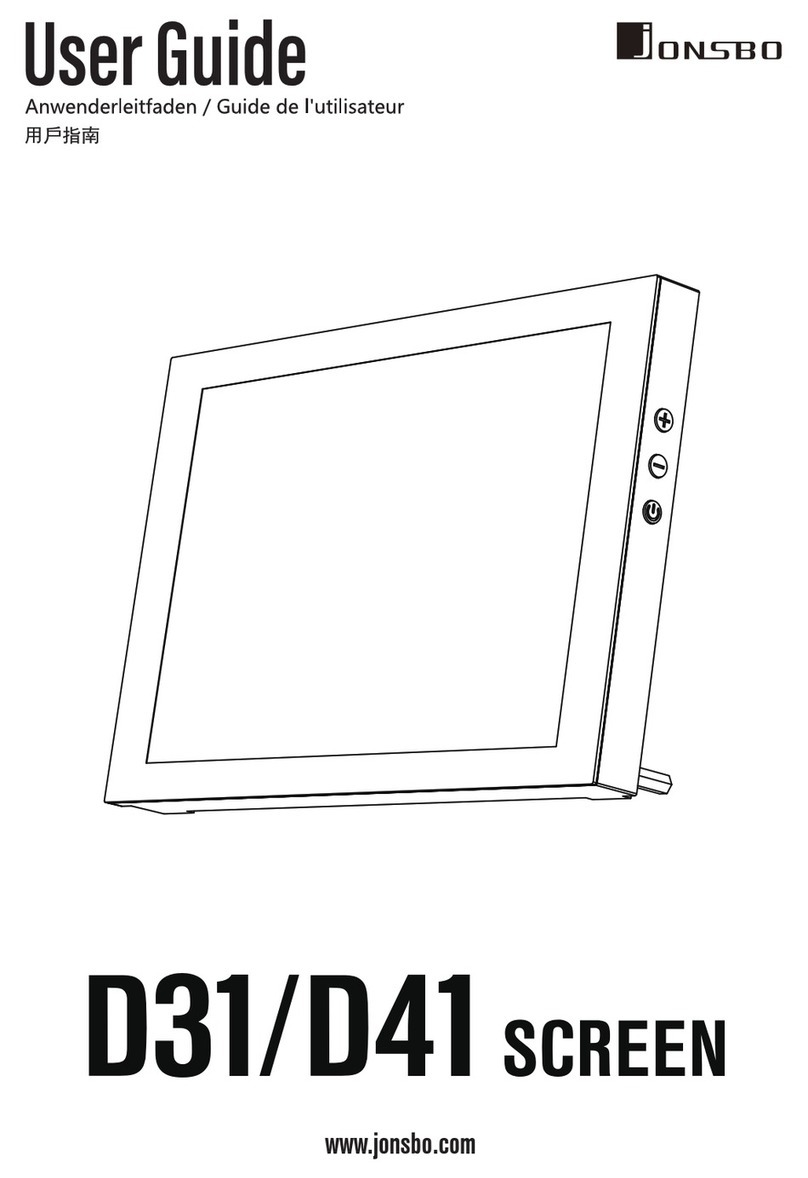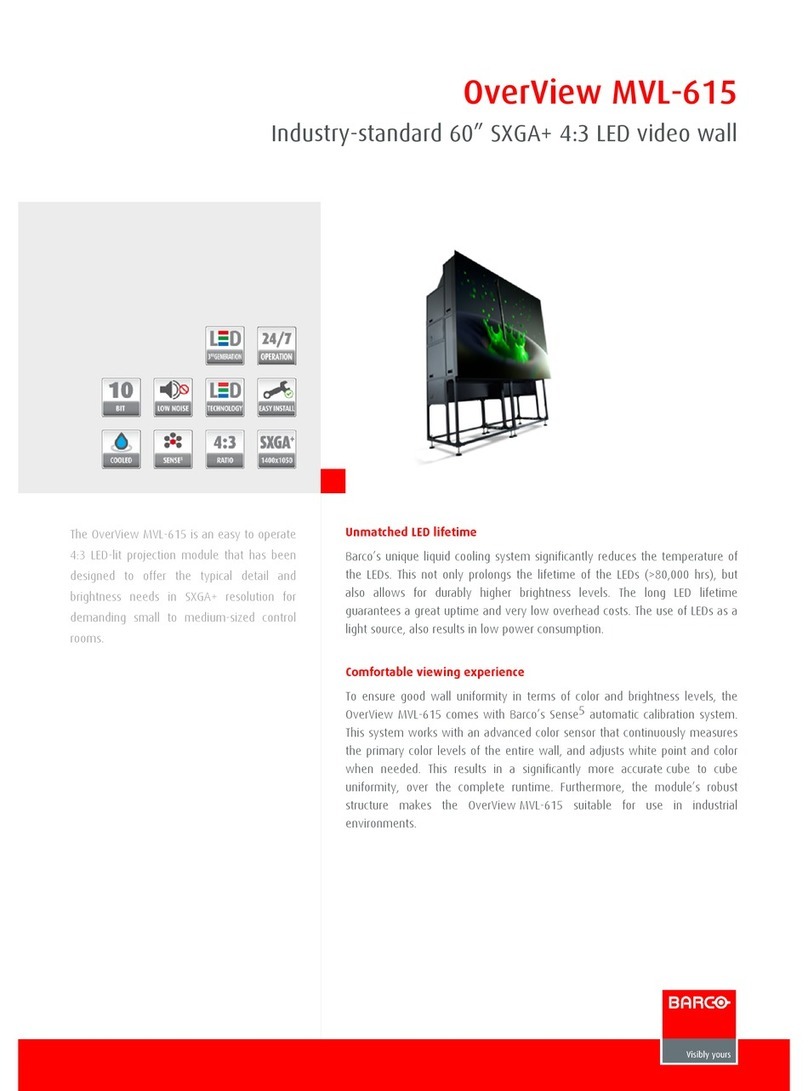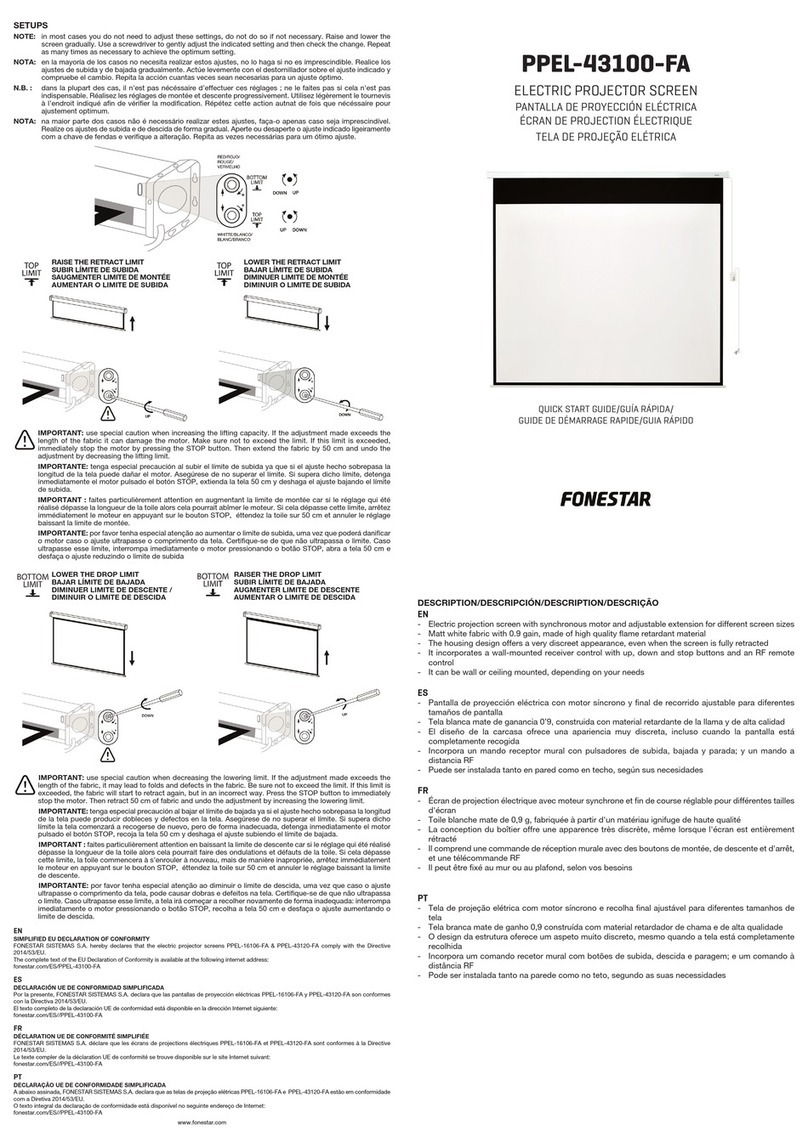
220V Ultimate Access by Draper Page 2 of 4
Motor roller
assembly
Retaining
clip
Washer
Idler end roller
mounting bracket
Motorized Roller/Fabric Installation
The bottom access panel/trap door assembly must be opened and placed in fully
opened position first.
The motor end mounting bracket has a metal bracket with snap ring for ac-
cepting motor head. Back out the four set screws in bracket until they are flush
with top side of bracket.
To engage the motor end bracket flange above the two channels in the top of the
screen housing, rotate the bracket approximately 45° counterclockwise to allow
the top surface of the motor bracket to rest flat against the top inside of the hous-
ing. Rotating the bracket clockwise until it is engaged with the channels, slide it
along the length of the housing against the electrical junction box.
Engage the idler end bracket (rectangular mounting pad) in the same manner as
the motor end bracket and slide it toward the opposite end of the screen housing.
Do not tighten the set screws on the brackets until the roller/fabric assembly is
installed, and centered in the case.
Locate the black washer and retaining clip.
Note: This will require two people to
perform safely. Raise the roller/fabric
assembly up into the screen housing and
engage the head of the motor completely
into the motor mounting bracket, making
sure the snap ring engages with the motor
and that the limit switch adjusting knobs
are visible from the bottom of the screen
housing.
While supporting the idler end of the roller,
slide the idler end mounting bracket toward
the roller. Insert the roller pin into the nylon
bushing on the idler end mounting bracket.
The roller idler pin needs to go through
the idler bracket far enough to allow the
washer and retaining clip to be reinstalled
on the pin.
Failure to replace the washer and retaining
clip as shown could result in the sepa-
ration of the roller from the brackets.
The roller/fabric assembly and roller
brackets may need to be slid left or right in
mounting channel of case to center fabric
within screen case.
Securely tighten the set screws on the
roller mounting brackets.
Connect the electrical plug from the motor
to the mating socket on the junction box.
Close the bottom access panel/trap door
as previously described.
Motorized Roller/Fabric Removal
Reverse the instructions above, under
“Motorized Roller/Fabric Installation,” for removal of the unit.
Adjustments
Screen has been factory set and should not normally require further
adjustment. However, if you desire to change the “up” and “down” stopping
positions, refer to drawing below, determine whether you need to adjust
the white or yellow socket, and proceed as follows:
CAUTION: Be sure all switches are in “off” position before adjusting limit
switches. Always be prepared to shut screen off manually when new
adjustment is being tested. Screen may be severely damaged if viewing
surface is allowed to run too far up or too far down.
ADJUSTING WHITE SOCKET—White socket is located on motor end of
screen roller and is accessible to a small flat screwdriver or a 4 mm (
5
/
32
")
hex key. Turning socket counterclockwise will allow the roller to run farther
up or down (as appropriate). Turning it clockwise will shorten operation,
causing screen to stop sooner. One full revolution of the socket will alter
the stopping position of the viewing surface by approximately 32 mm.
ADJUSTING YELLOW SOCKET—Yellow socket is located on the motor
end of screen roller and is accessible to a small flat screwdriver or a 4 mm
(
5
/
32
") hex key. Turning the socket counterclockwise will allow the roller to
run farther up or down (as appropriate). Turning it clockwise will cause the
roller to stop sooner. One full revolution of the socket will alter the stopping
position of the viewing surface by approximately 32 mm.
AT NO TIME SHOULD VIEWING SURFACE BE UNROLLED ENOUGH
TO EXPOSE ANY PART OF SCREEN ROLLER.
Operation
When screen is first operated, be cautious! Cycle unit down and up
several times to confirm satisfactory operation.
220V SINGLE STATION CONTROL—3-position UP-OFF-DOWN switch
permits operation to be stopped at any point. Factory adjusted limit switch-
es automatically stop screen when fully down or fully up.
220V MULTIPLE STATION CONTROL—(Not CE approved) Switches are
similar in appearance to 220V Single Station Control. Screen stops when
switch is released and may be restarted in either direction. Factory adjust-
ed limit switches stop screen automatically when fully up or fully down.
24V MULTIPLE STATION CONTROL—Three-button UP-STOP-DOWN
switches stop at any point desired, operate in any sequence. Factory
adjusted limit switches automatically stop screen when fully up or down.
220V & 12V VIDEO INTERFACE CONTROL—(Not CE Approved). Allows
screen to be controlled by a trigger signal—when signal comes on, screen
descends automatically. Two versions: Model VIC220 integrates screen op-
eration with a DRAPER video projector lift or a video projector or tuner with
a 220V switched outlet. Model VIC12 interfaces with 12V switched outlet.
Both available with override switch (VIC–OS), permitting independent
operation. VIC–OS not available with factory installed VIC220 & VIC12.
KEY OPERATED SWITCHING—Two kinds of key-operated switches are
optionally available with this unit.
➀The key-operated power supply switch controls power to screen and
switches. When it is “off”, the switches will not operate screen. Key
may be removed from the switch in either “on” or “off” position.
➁A three-position key switch permits screen to be operated directly by
key. In this case, the screen’s operator must always have a key.
RS232/Ethernet—Serial communication and network communication
optionally available with wall switches, RF or IR remote.
Fabric unrolling from back
of roller
Fabric unrolling from front
of roller
Audience
side
Audience
side
Left hand motor
White Socket—Down
Yellow Socket—Up
Left hand motor
White Socket—Up
Yellow Socket—Down
www.draperinc.com (765) 987-799
